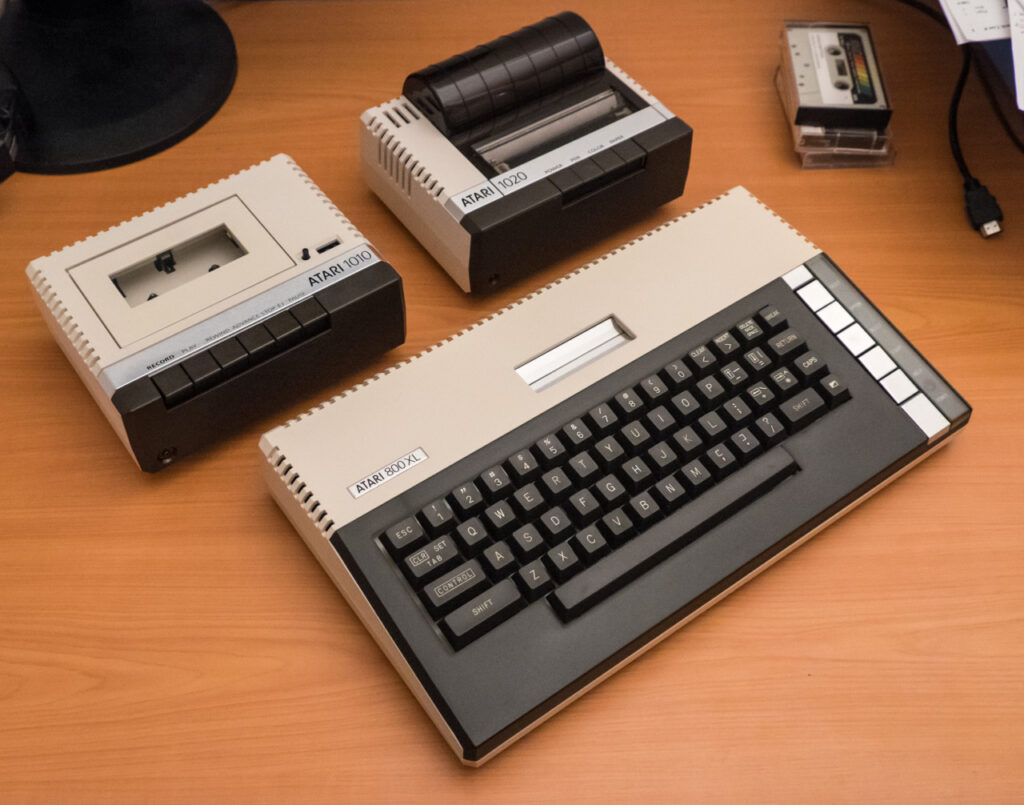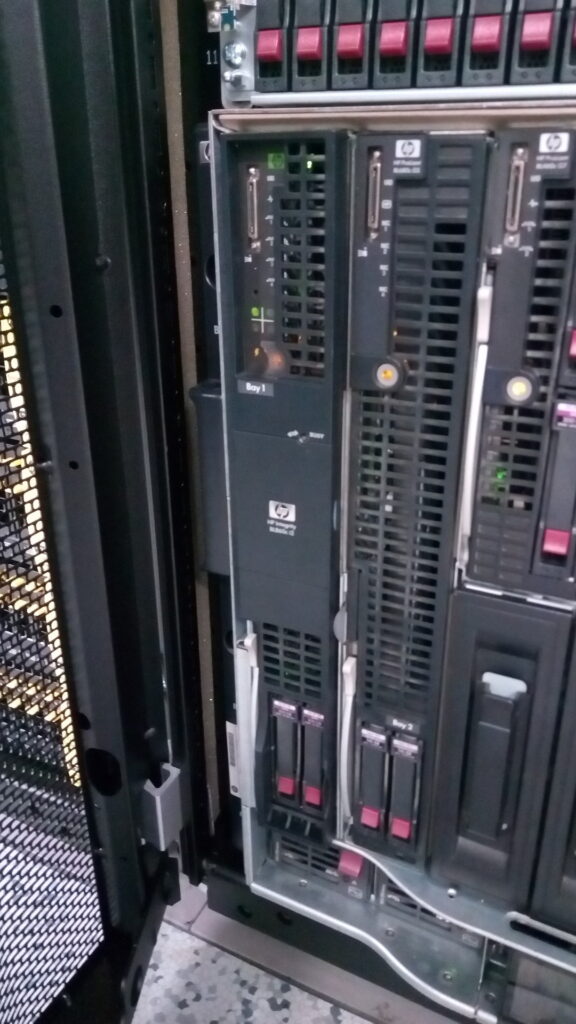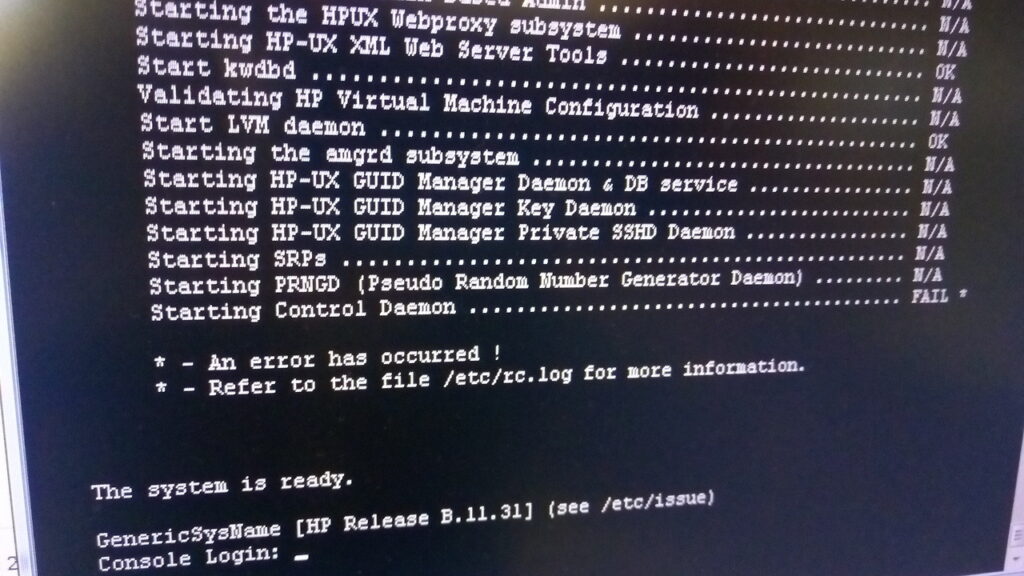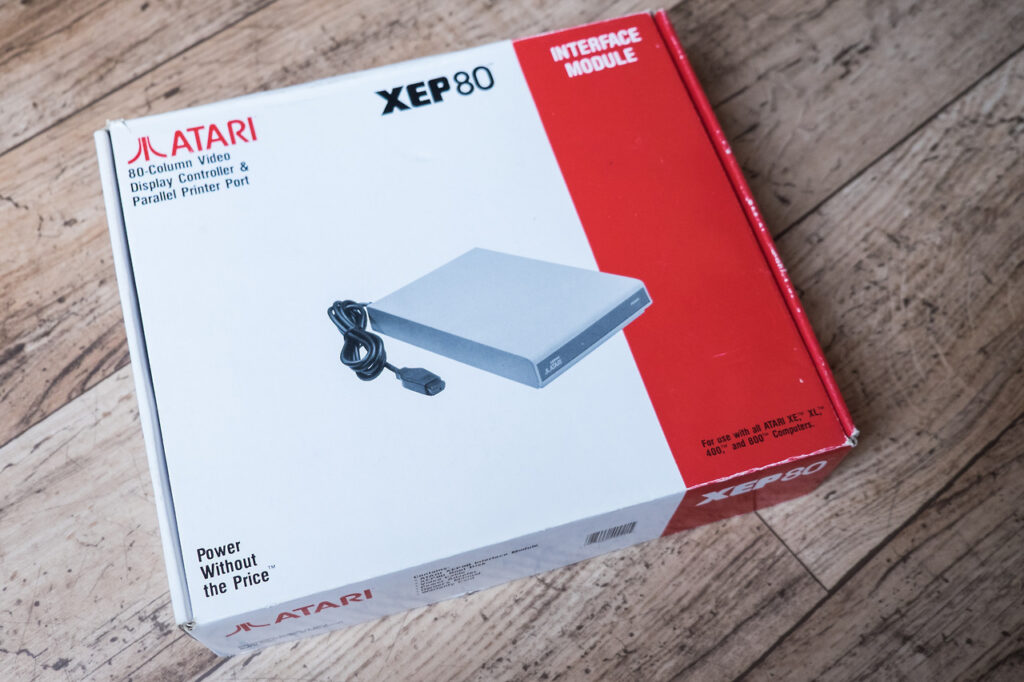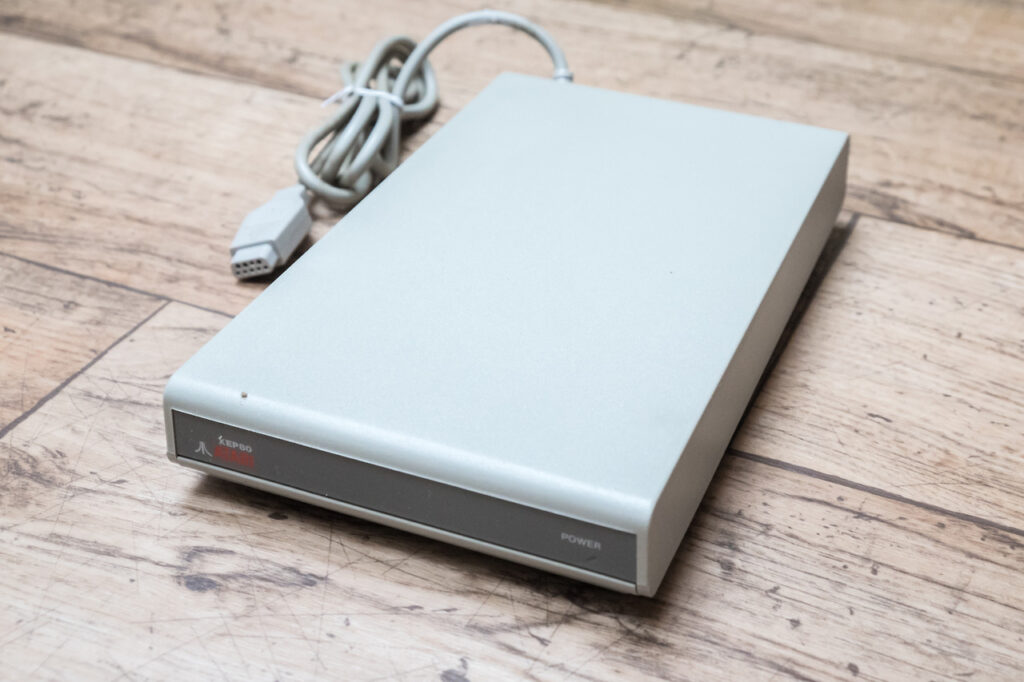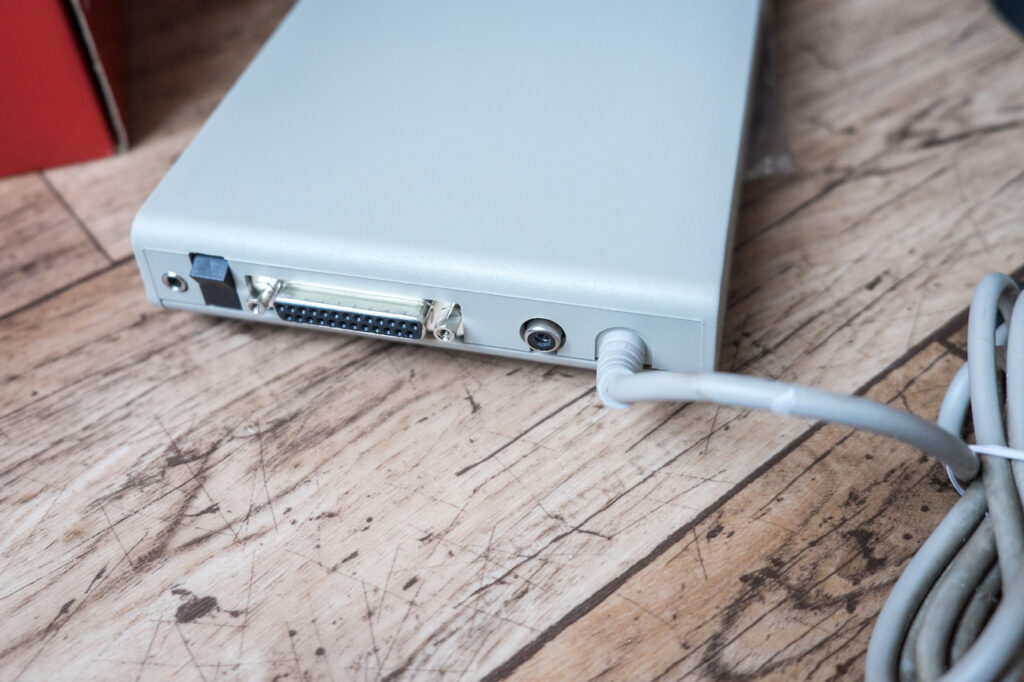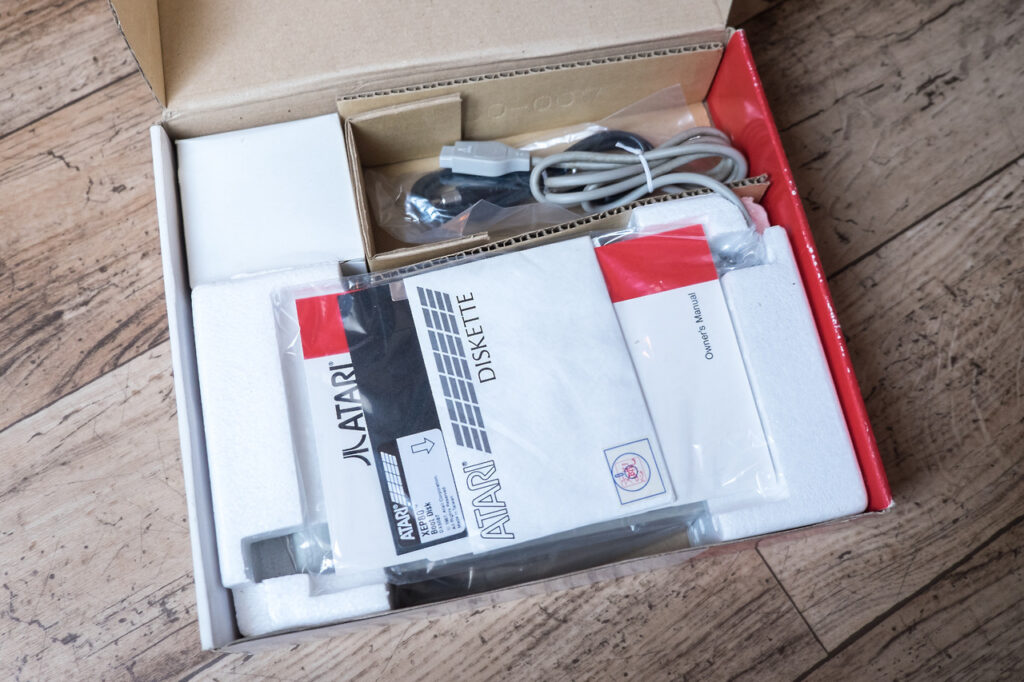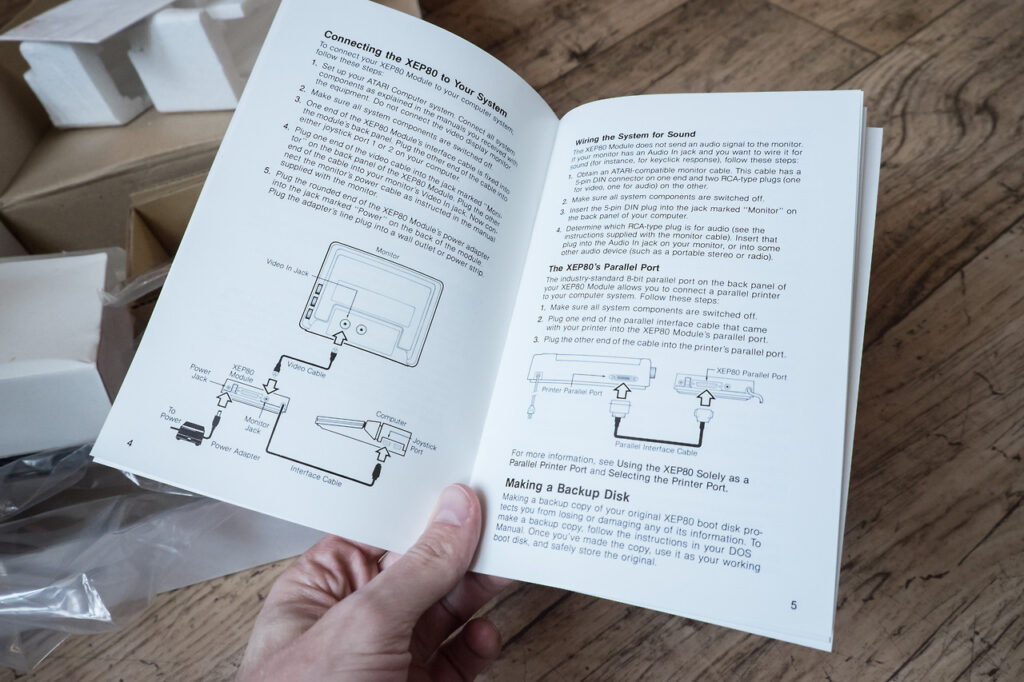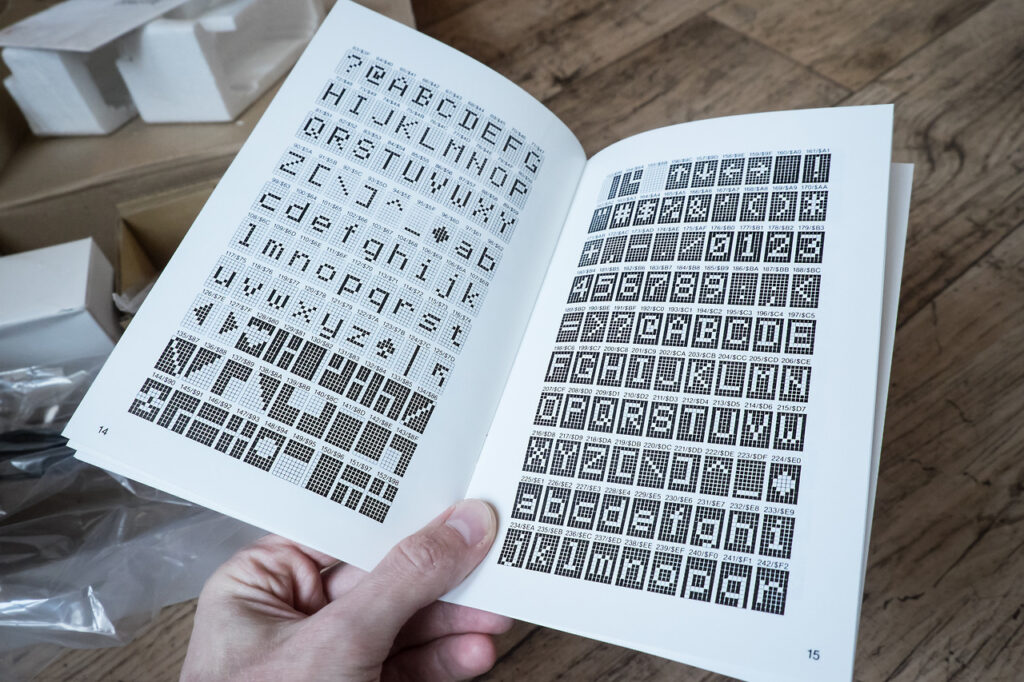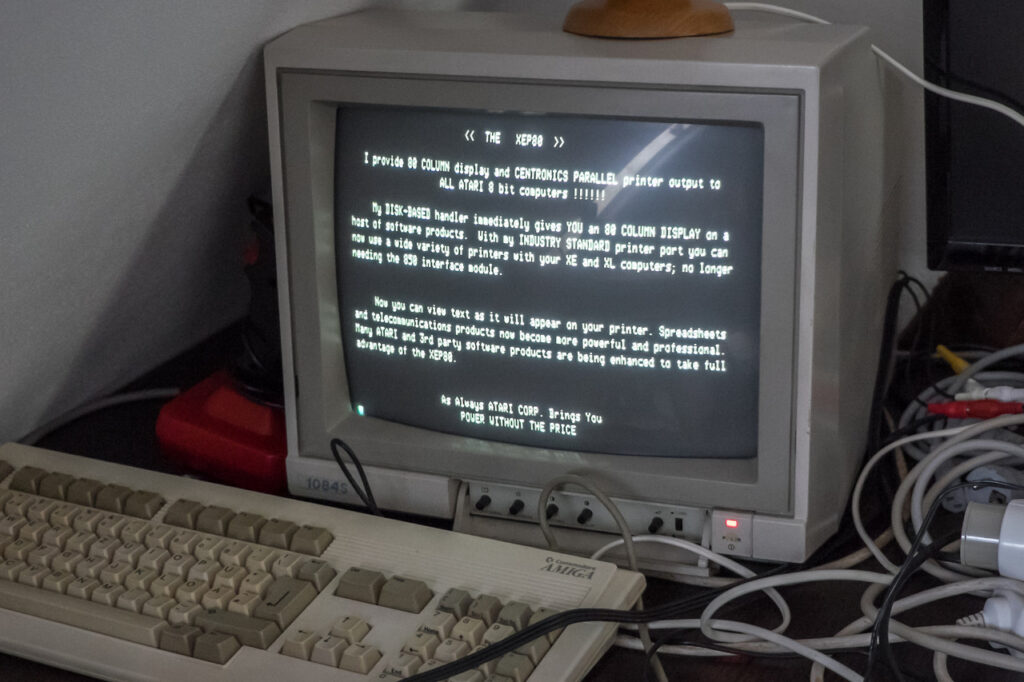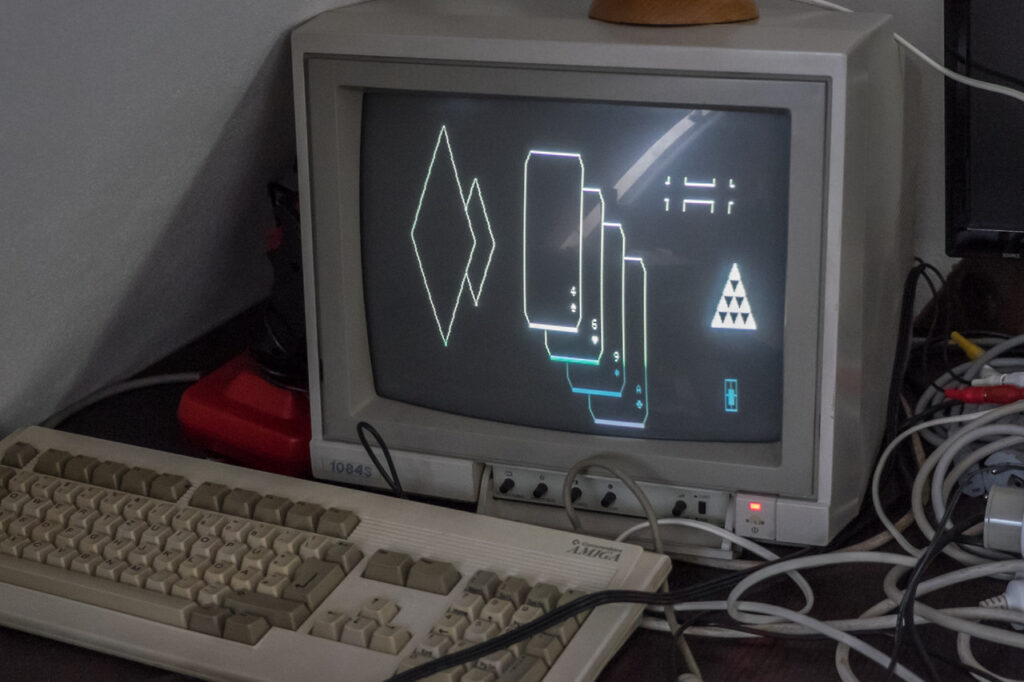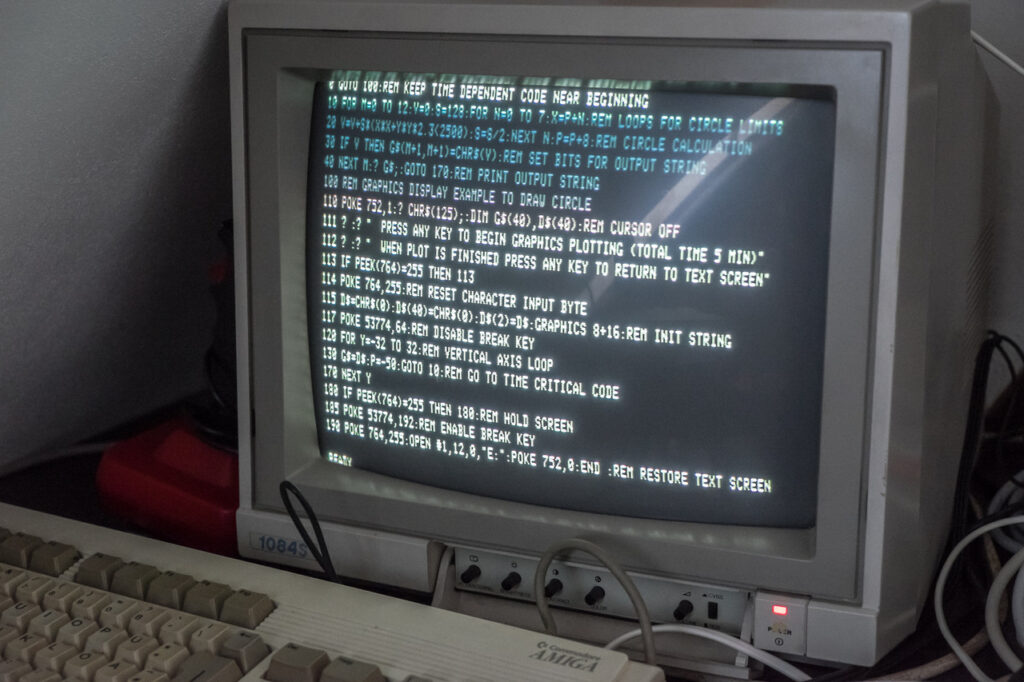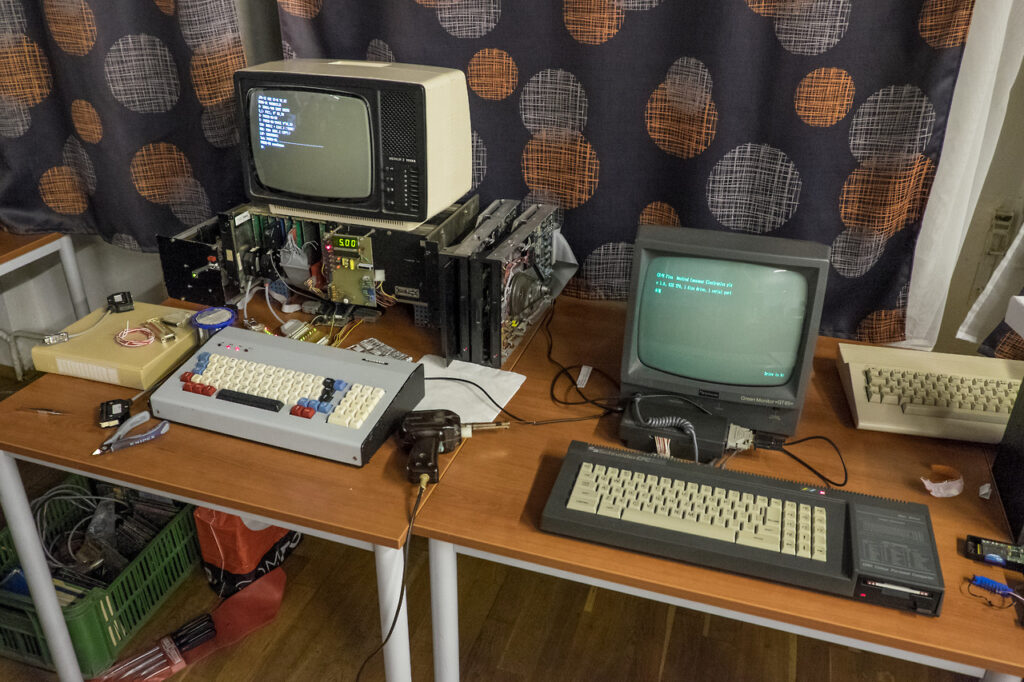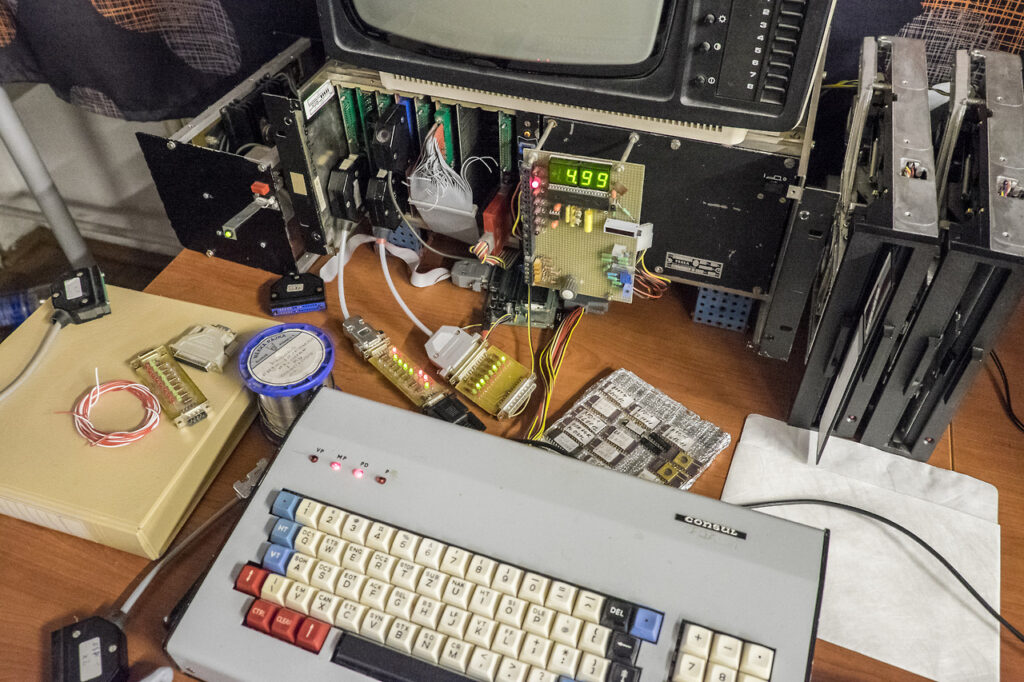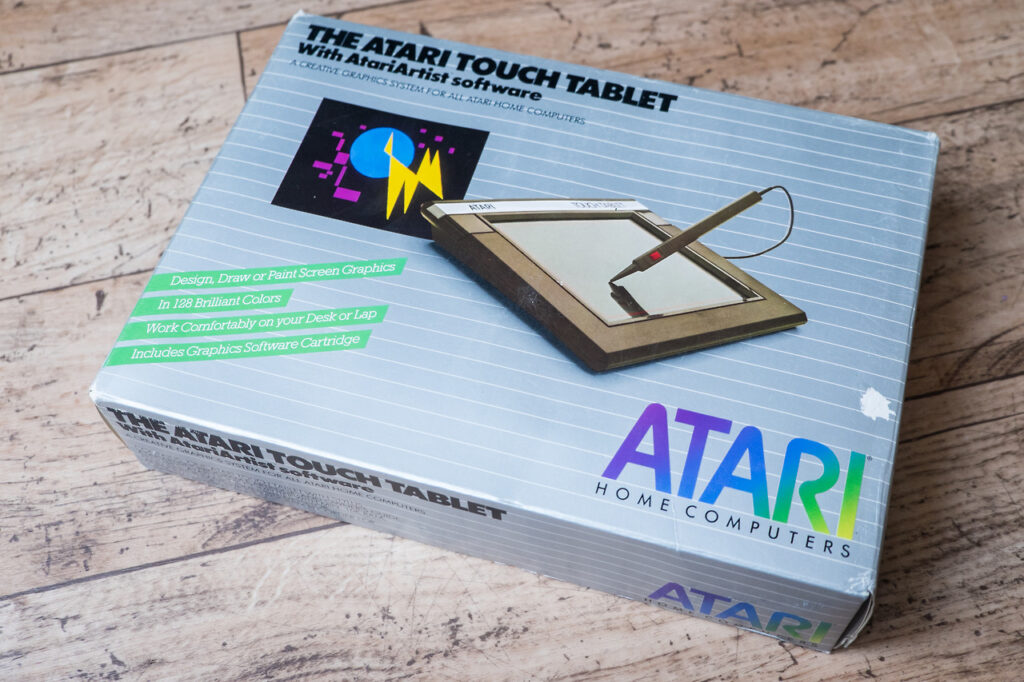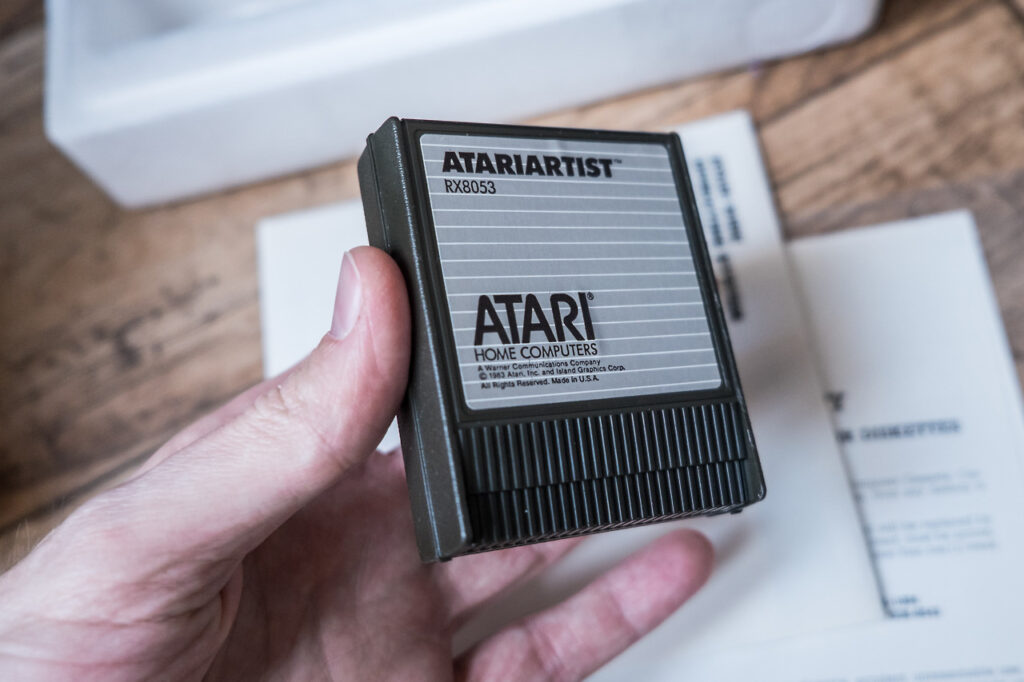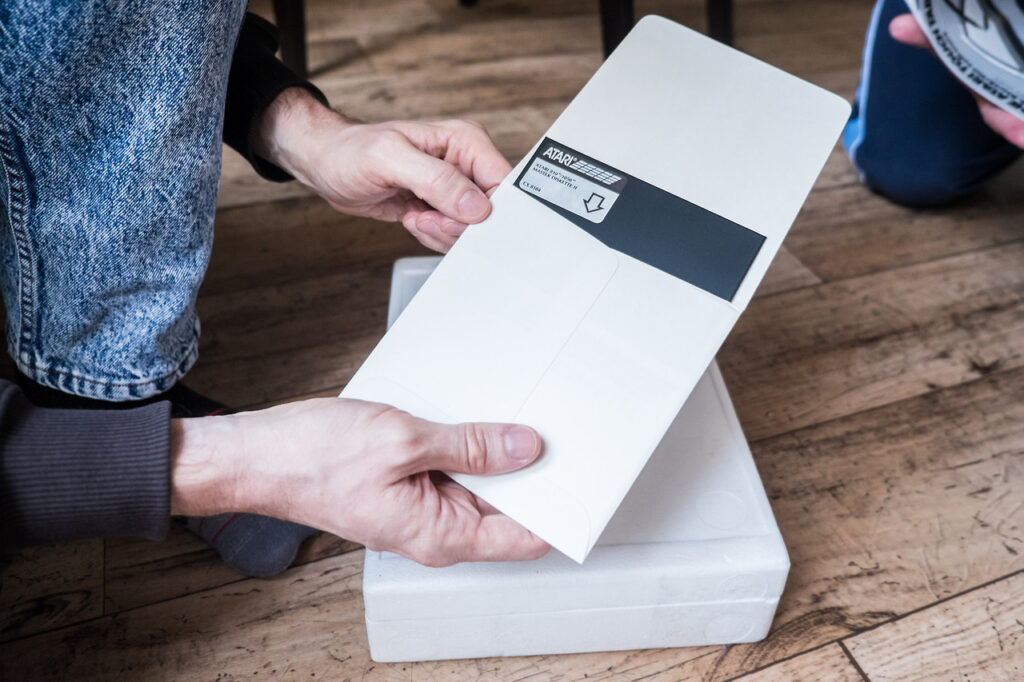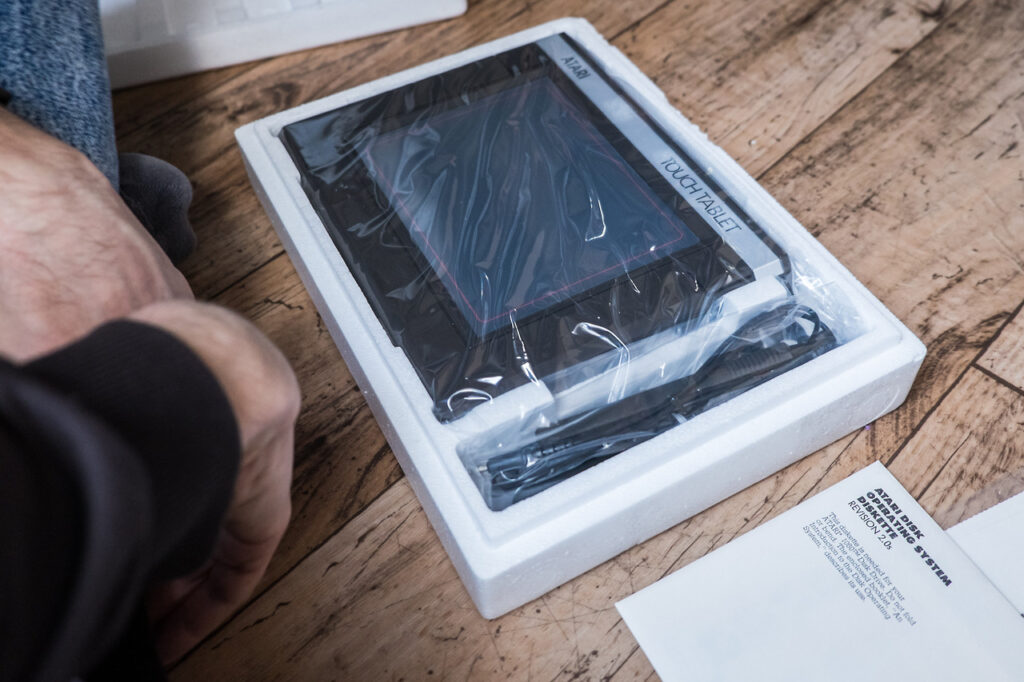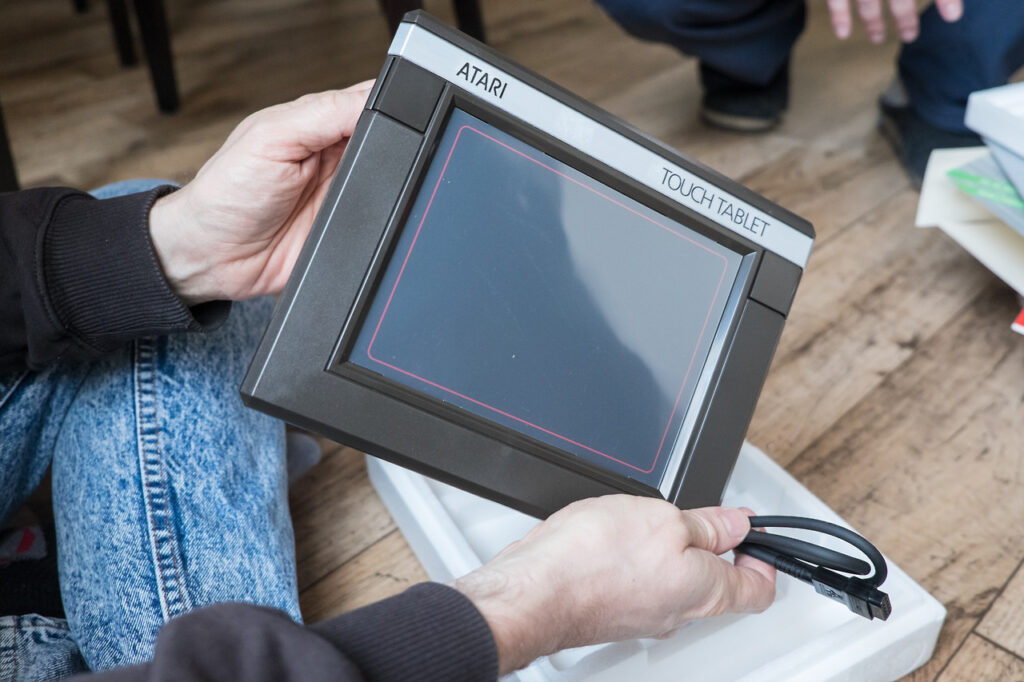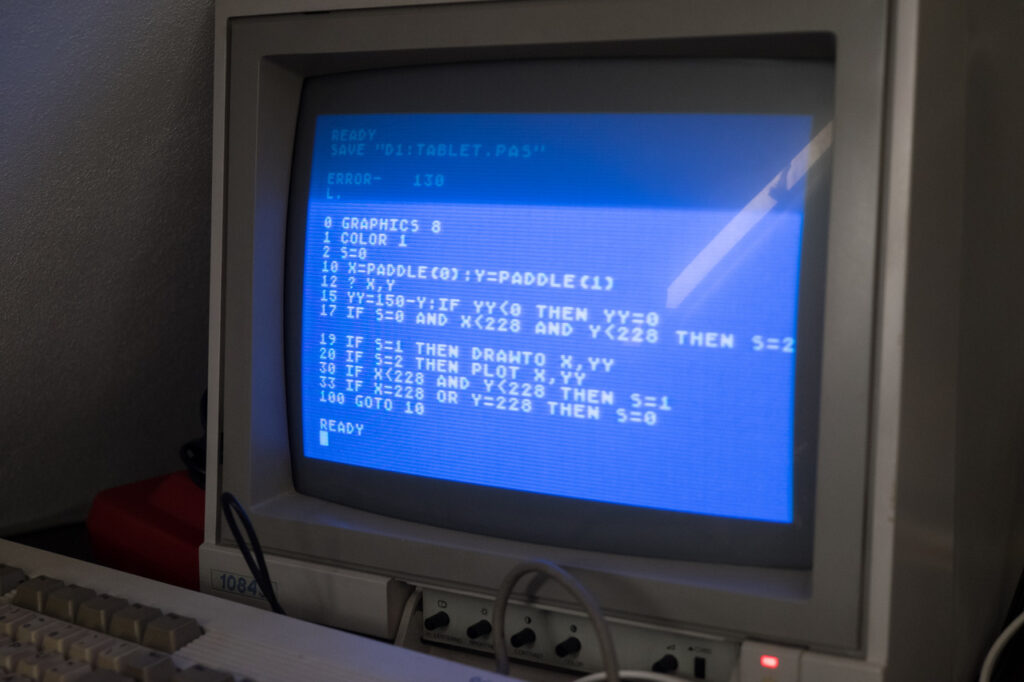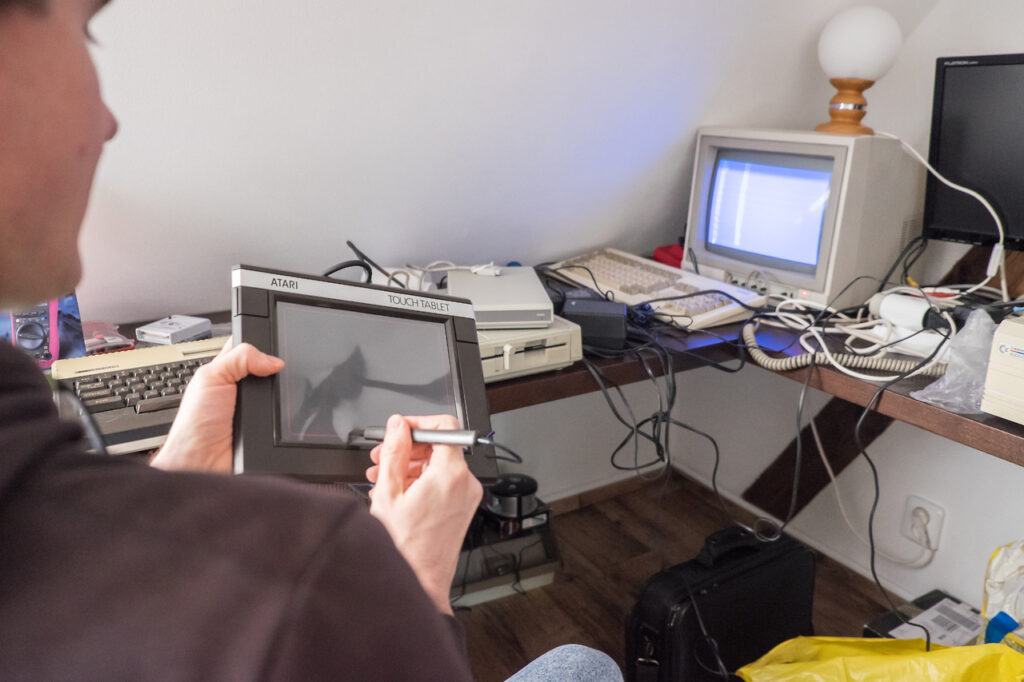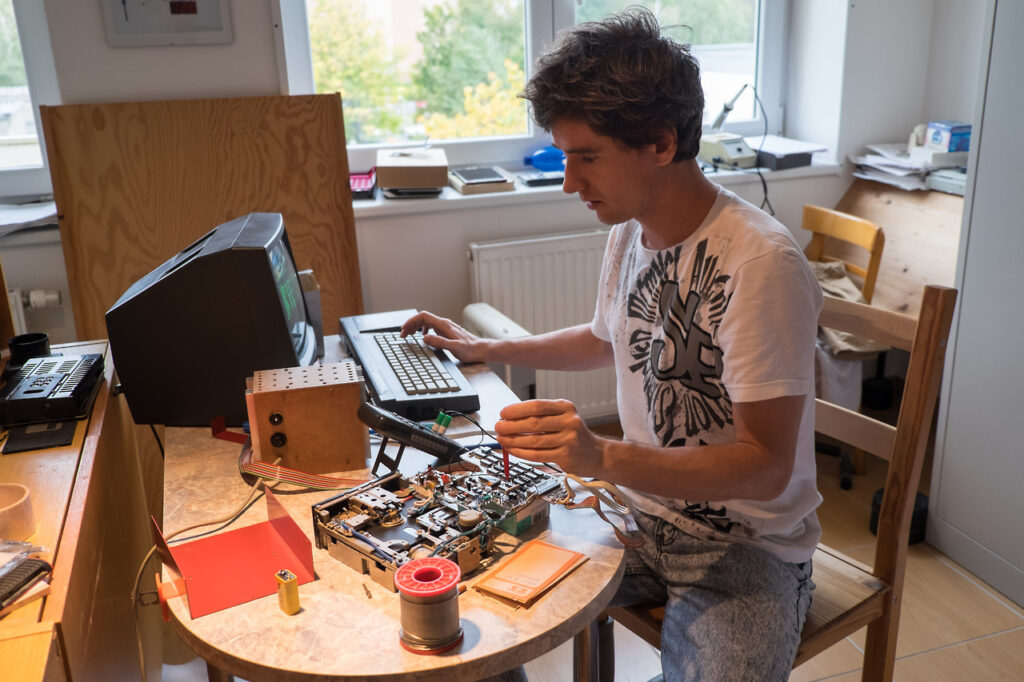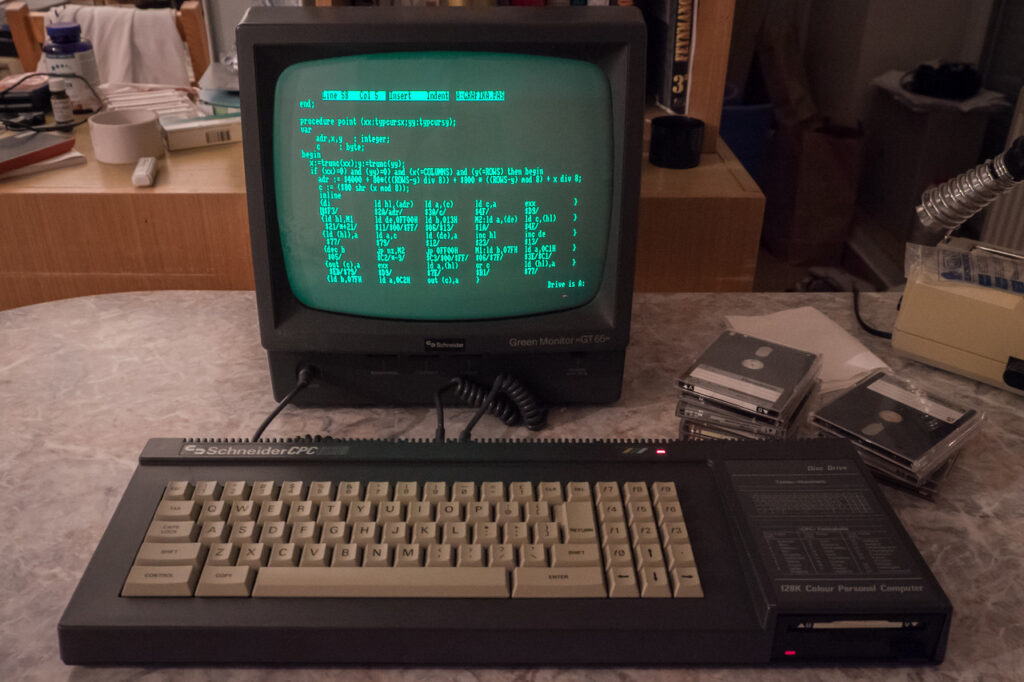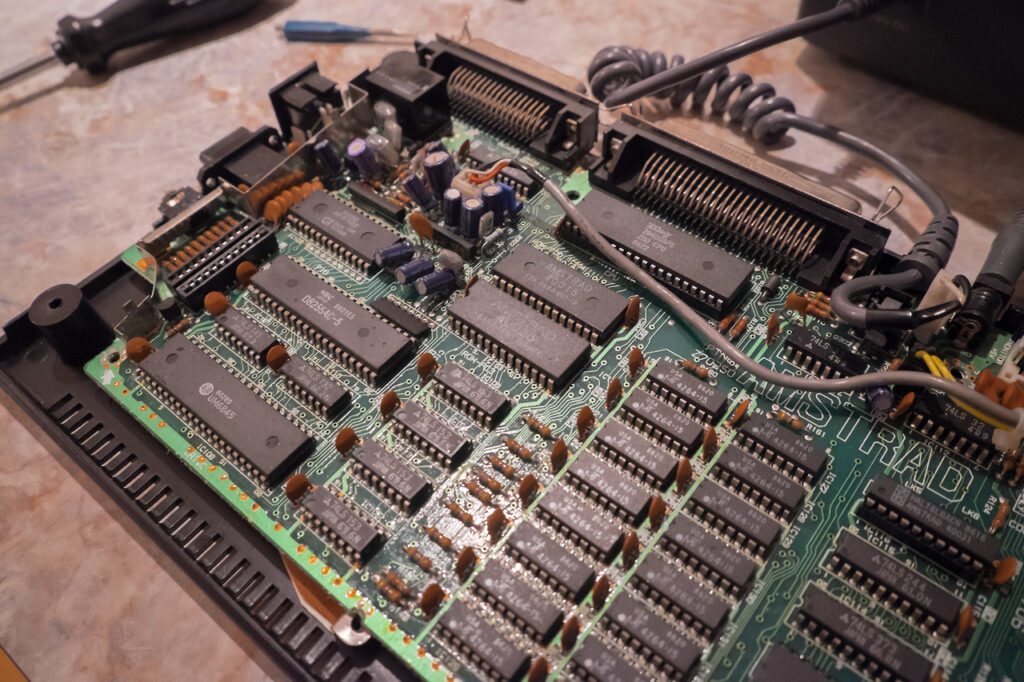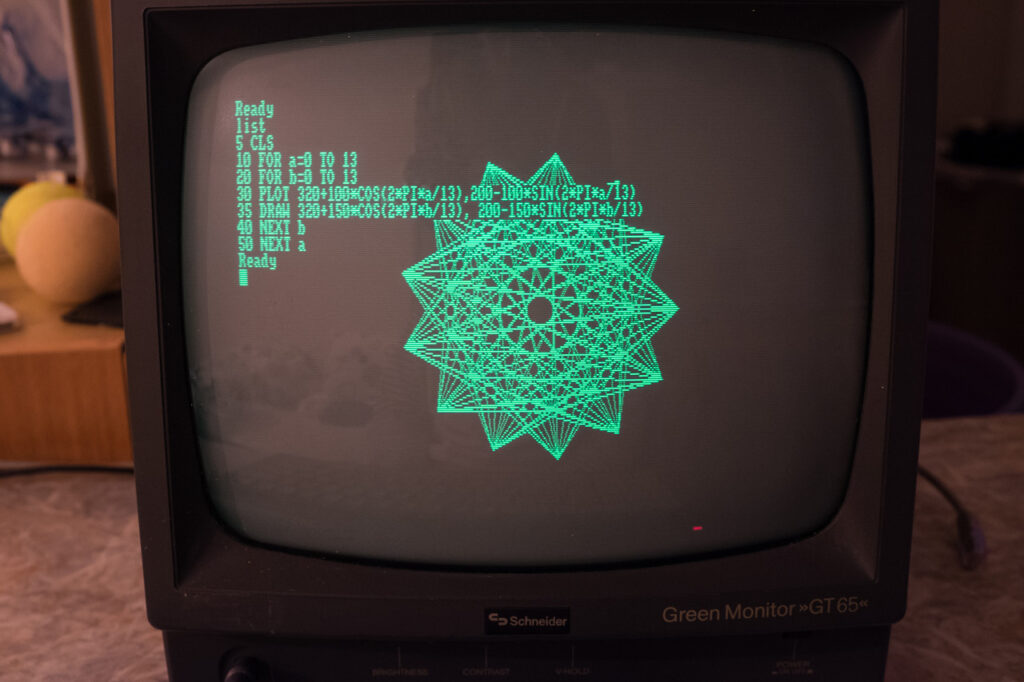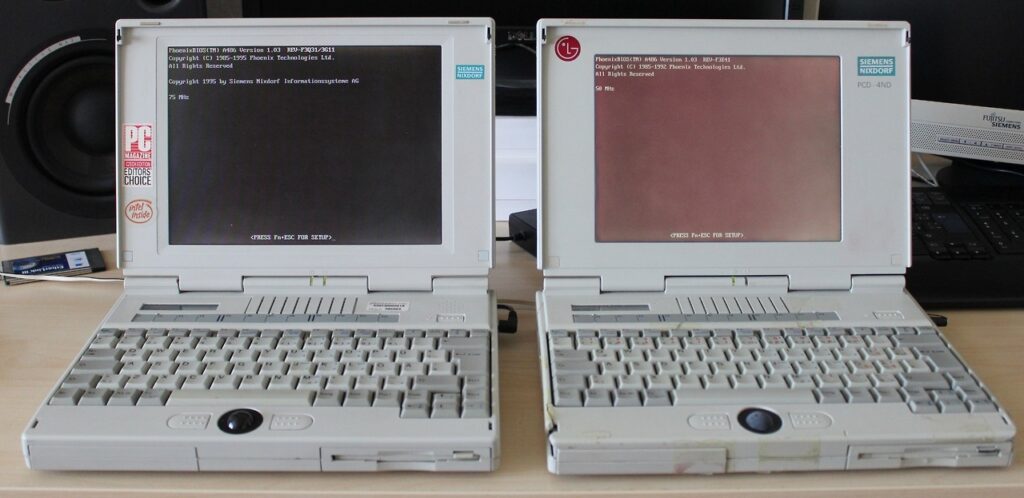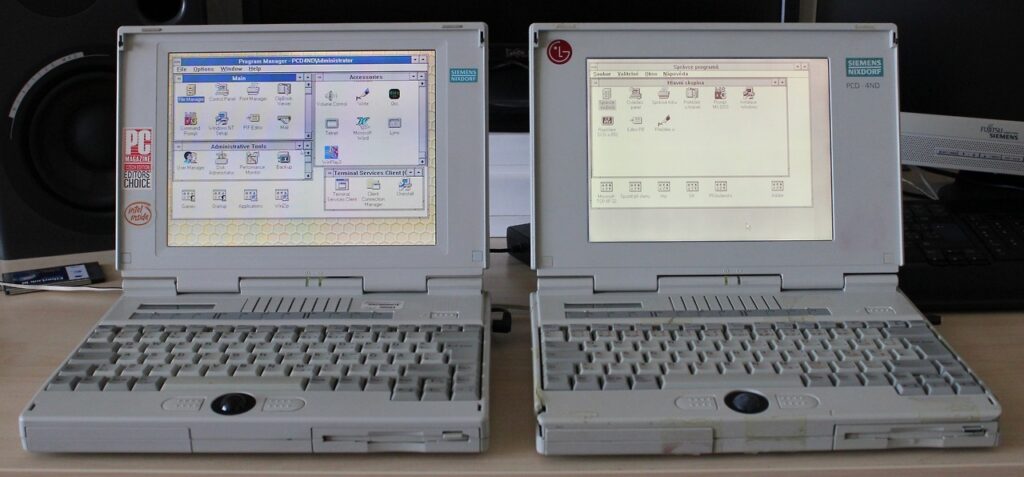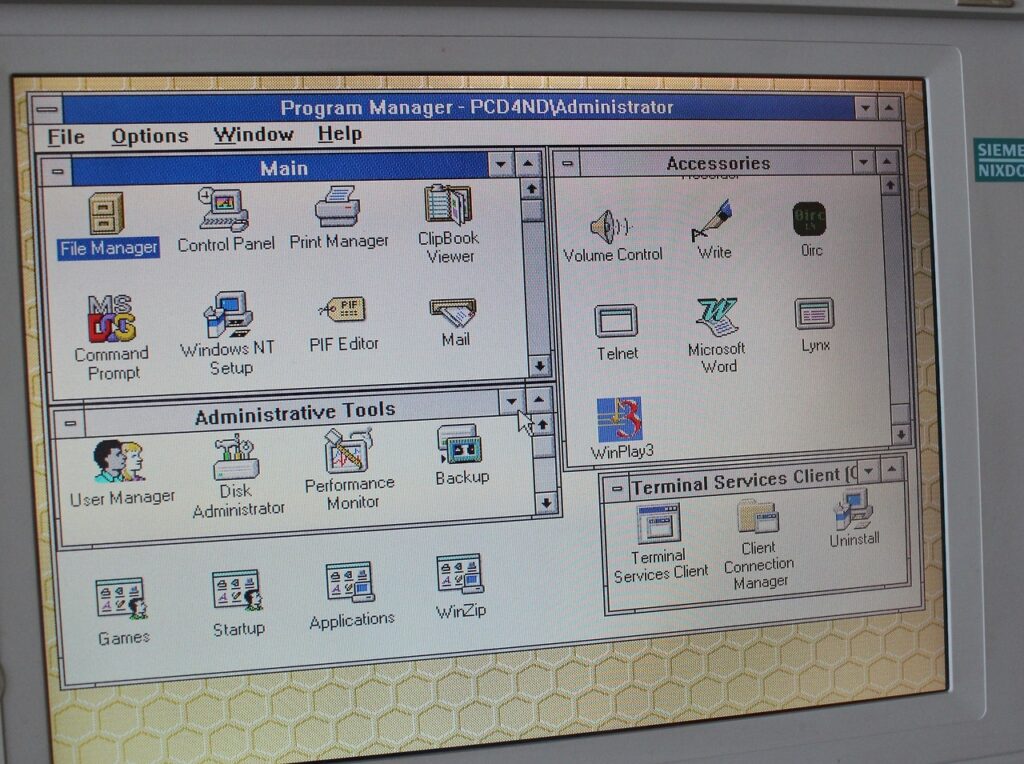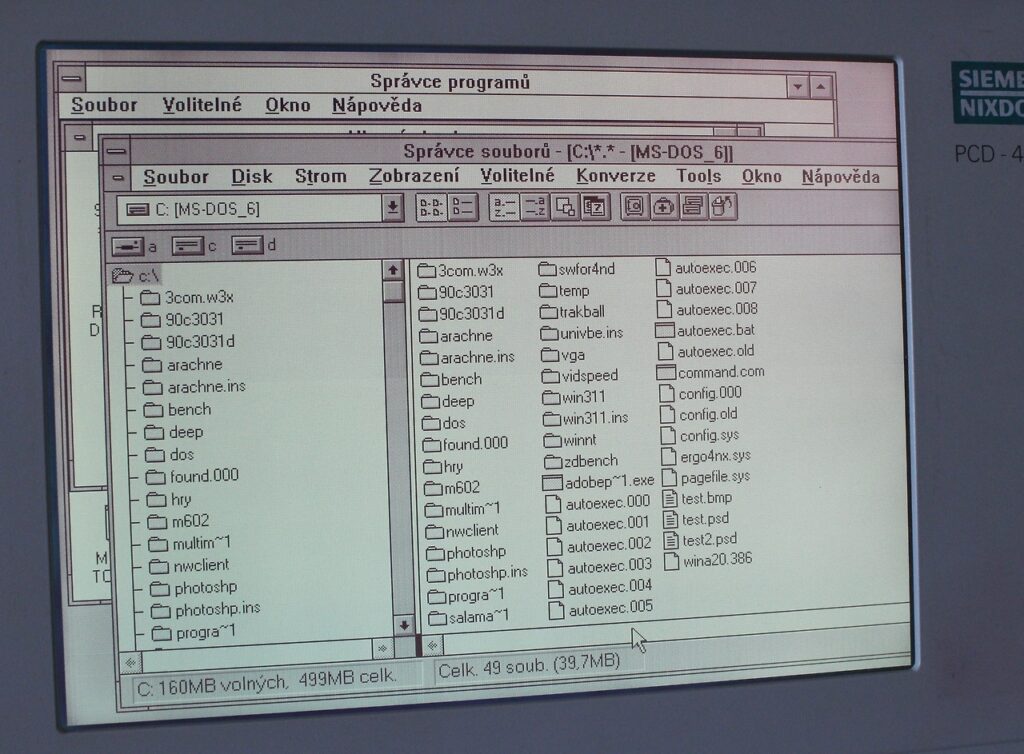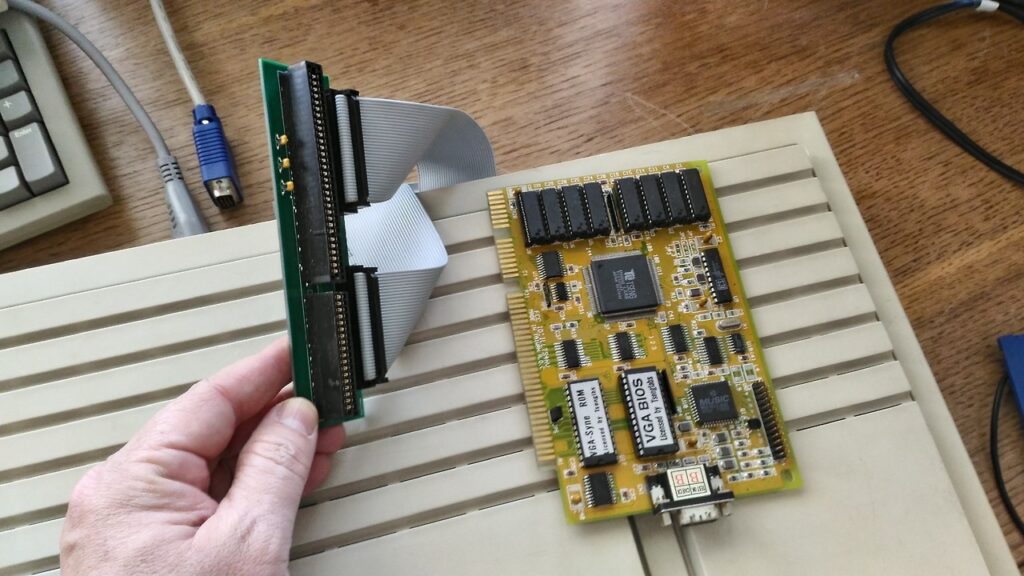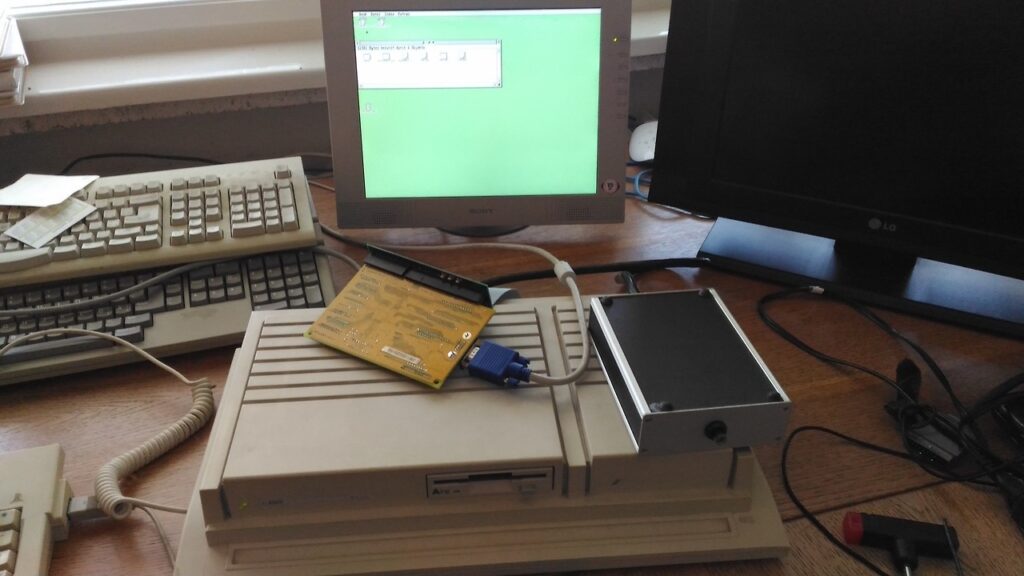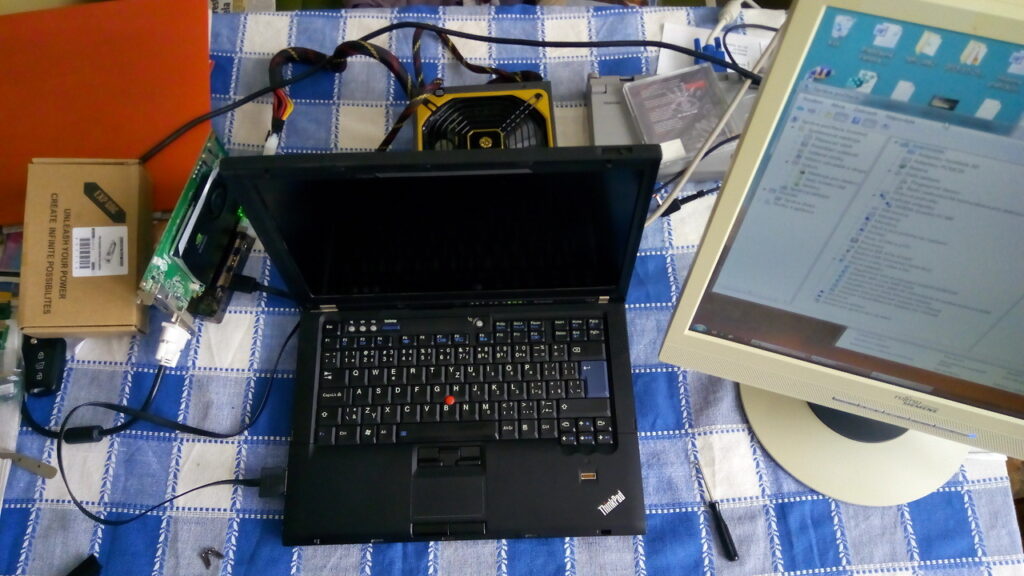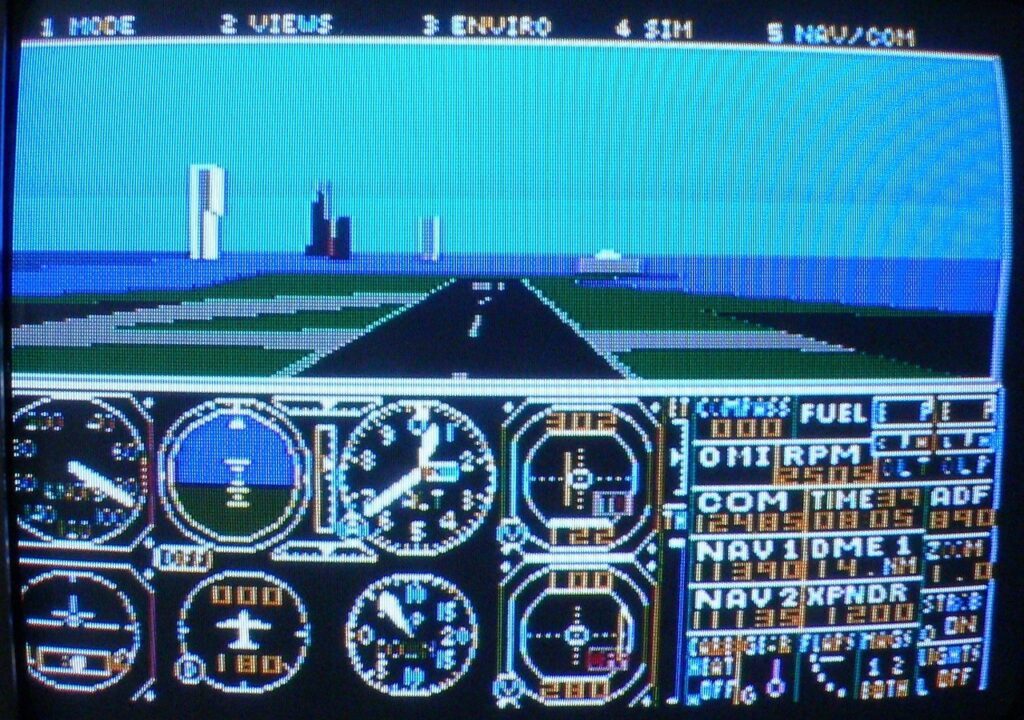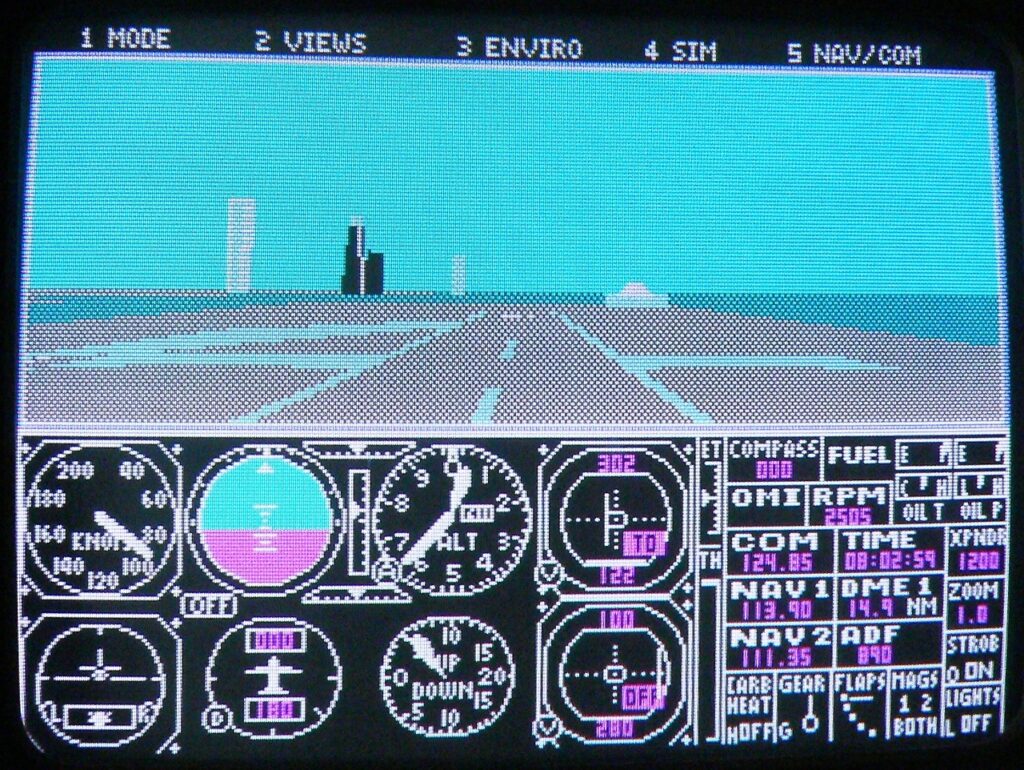Uncategorized
Itanium Blade Server
Yay! I accidentally found an Itanium-based blade server that had never been used. I already removed the original root password that nobody knew and started with HP-UX configuration over a virtual serial connection.
I’m surprised how uncomfortable the terminal is. Although I have a very recent version of the system, even backspace/delete doesn’t work the way the world is used to for decades. Looks like UNIX guys like it rough…
Atari XEP80 (1987)
This device allowed users of Atari 8-bit computers to display full 80 characters per row on their screens. XEP80 came too late and used very strange way for connection with the computer – it was attached to a joystick port. It was quite slow with the original driver but there were 3rd-party drivers allowing users to double the screen update speed (matching 9600-baud serial terminals).
It’s a shame that Atari came with the device at the end of the 8-bit Atari series life and implemented it this way. The powerful terminal processor inside could do much more but that would need to connect it using the bus expansion connector. However, that connector changed over time on the 8-bit Atari series so that would affect compatibility. As a result there were not many software packages supporting its 80×24 mode.
Unfortunately, I didn’t have much time to play with the device. I only run bundled demo programs and took these photos (don’t be confused with the Commodore monitor and keyboard). I will definitely take it home one day and try how seriously this could be used back then.
SAPI-1 (1983)
On the left side, you can see SAPI-1 – a professional computer that was made in the Czechoslovak Socialist Republic and was used mainly for industrial applications. Its architecture was modular and not very far from S100-bus computers. One of the cards contained CPU (Zilog Z80 in this case) while other cards contained RAM, ROM and communication interfaces. It was able to run CP/M which was loaded from 8-inch floppy drives.
This photo is from the last Bytefest show a few weeks ago. We were copying files over a null-modem cable from Amstrad CPC6128. File transfers between different CP/M computers were not an easy task back in the 80s. Each computer had different floppy drives or at least a different logical format of the disks. This was very similar to terminal incompatibilities where every full-screen program had to support tens of terminals in order to be compatible with most CP/M computers. If your computer was not on the list, you ended up with incorrect layout of the text on the screen.
Because of these incompatibilities, serial and modem connections were the best ways to transfer files back then and they are even today. Don’t expect something “plug and play”. Although I could set the transfer speed in software on Amstrad CPC6128, the owner of the SAPI-1 had to remove the communication card and change the serial link configuration using a soldering gun. Another issue was to find programs with compatible transfer protocols but that’s a different story. Finally, after less than an hour, we were able to copy all our precious files.
Atari Touch Tablet (1984)
Atari Touch Tablet was a device compatible with 8-bit Atari computers and was intended for users who didn’t want to draw pictures with just joysticks or keyboards. We had not much time to test the device and an available heavily upgraded Atari computer didn’t work with the Atariartist cartridge. Therefore we tested it just using a simple BASIC program. It looked like the surface sensitivity degraded little bit over time but it was still usable.
I will post more once I have enough time to properly play with the device and supported software.
Amstrad (Schneider) CPC 6128
Although Amstrad CPC is not the preferred choice among vintage computer fans, it’s definitely a very interesting series of 8-bit computers and was sold in millions of units. This model combines 80-column display (screen resolution of 640×200), integrated 3-inch disk drive (each diskette can hold 360kB of data), AY sound and surprisingly good keyboard.
This was one of the cheapest computers that could run CP/M, the operating system with many professional programs available. Although Wikipedia says that there were a lot of games on CPC computers, I saw only people using this machine for actual work. This particular machine was used in the late 80s by a scientist in a geophysical institute for simulations and word processing. He sold the machine with an 5.25-inch external drive (made by Robotron and modified to work with CPC), an RS232c interface and a box full of disks containing development tools, his own Pascal programs and a customized version of WordStar (that allowed users to write and read Czech characters).
The keyboard is better that those on 8-bit Atari and Commodore computers and the computer gives more professional overall feeling. I like how CP/M has been integrated in the system. You can easily switch between BASIC (AMSDOS) and CP/M environments by using |CPM and AMSDOS commands and both use the same way to store files on disks.
I know that it is possible to run CP/M also on Spectrum +3 and Commodore 128. However, the former supports only 40-column display and the latter is significantly slower due to hardware design limits. This was a better choice for those who wanted to use CP/M on a home computer back then.
Monochrome and Color Passive-Matrix LCD Screens
Switching from passive-matrix to active-matrix LCDs was a big deal for many. However, not everybody in the mid-90s had enough money to afford a color TFT panel in a new laptop as the price premium was still about $1000. Color passive-matrix screens were a solution for those with tight budged.
640×480 monochrome passive-matrix screens needed about 1.800 transistors to control all pixels (n*2+m for dual-scan). Color active-matrix screens (TFT) with the same resolution needed 300.000 transistors as each pixel is controlled by three transistors (3*n*m). That’s why these screens were so expensive.
Color passive-matrix screens (DSTN) were a good low-cost alternative for everybody who wanted colors “on the road”. This technology needed only about 5.000 transistors for the resolution of 640×480 (2*3*n+m). The result was not exceptional but it was good enough for many productivity applications where slow response rate (300-700 milliseconds) was not a problem.
Unfortunately, quality varied a lot between DSTN screens. Although some had a very crisp picture with shiny colors on par with today’s cheap TN panels, some suffered from significantly poorer contrast, washed colors and color bleeding.
The machine on the right is in fact my first own PC compatible laptop. I hated the screen so much back then and I envied others their color-screen portables. The machine on the left has the best DSTN panel I’ve ever seen in the laptop. Although both machines use the passive-matrix technology the difference in picture quality is huge.
UPDATE: (1) I was not completely right with the transistor counts – for passive-matrix displays, there will be at least twice as much transistors (one on Vcc and one on GND for each row/column to output both logic levels 0 and 1). (2) I also forgot to mention that passive-matrix screens don’t have transistors in the panel itself. There are special chips on a separate board which makes the solution much cheaper in comparison with TFT (which has multiple layers with tiny transistors inside the panel).
External Graphics Cards
A friend of mine showed me a low-cost option to expand graphics capabilities of Atari TT030. VME bus was converted to ISA and a standard ISA VGA board could be used then. It looked very cumbersome to me and I was thinking how desperate one must be to do it this way.
After few months, another friend sent me the eGPU kit that allows to connect a desktop PCIe graphics card to a computer (laptop) that has only M.2, mini-PCIe or ExpressCard connection. I tried only the ExpressCard version but there are people who made holes in their laptops, removed a Wi-Fi adapter and installed a thin cable that can connect internal PCIe x1 with the external adapter. With an additional ATX power supply, huge compatibility issues and necessary OS hacks, this is even more cumbersome. Anyway, I’m pretty sure that there is a target audience even for this.
Looks like some people didn’t change much in almost 30 years.
Flight Simulator 3.0 Running on IBM PC with CGA Graphics
Users with composite monitors (or TV sets) could use the 16-color video mode that was based on the same trick as was used in Apple II. On the other side, it was not possible to use more than four colors at the same time in the game when the system was connected to a standard RGBI (TTL) monitor. This was typical for many early PC games.
